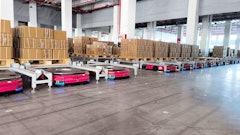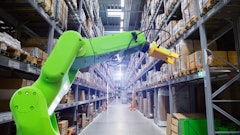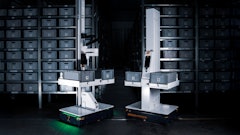
The U.S. industrial market is rebalancing as the surge of record new supply recedes and users navigate the uncertainty around the economy, trade policy, and interest rates. Demand for industrial space, which has now been positive for 15 years, has slowed from its frenzied growth between 2021-2023, according to recent data from Colliers, but is poised to rebuild once clarity returns.
“During this cycle, developers and industrial occupiers have found new growth paths in several fast-growing markets,” the report details. “While each of these emerging industrial markets in this report has expanded its inventories significantly over the past five years, net absorption has often kept up. This report highlights what sets these markets apart — from geographic and cost advantages to labor and population trends, demand drivers, and the major investments and infrastructure projects that will shape their long-term growth.”
Here are the Top 10 emerging industrial markets to watch for supply chain market expansion.
1. Boise, Idaho, is a quickly growing logistics and distribution hub, located along I-84 and close to the Boise Airport. Within a single day’s drive, users can reach Seattle, Portland, Salt Lake City, and Northern California. Demand is fueled by significant economic anchors, most notably semiconductor expansion and related tech investment. Boise’s strong agricultural base — dairy, cattle, and potatoes — adds another layer of demand, while the market is also becoming increasingly competitive for regional distribution. Manufacturers are also being drawn to the region by Idaho’s business-friendly climate, abundant water, lower energy costs, and an easier entitlement process than in neighboring states like California, Washington, and Oregon. Over the past five years, Boise’s industrial market has grown by 17.8%, or 7.1 million square feet of new supply. Net absorption has been positive in that period, totaling 4.6 million square feet, although it has slowed during the past few quarters. New supply has nudged the vacancy rate up 58 basis points over the past year to 8.3%, slightly above the U.S. average of 7.3%, but still below that in other high-growth markets.
2. The Albuquerque, N.M., industrial market benefits from being at the crossroads of Interstates 25 and 40, offering direct access to major regional and national transportation routes. But national developers have been cautious, constrained by high land costs, limited industrial-zoned land with ready infrastructure, and elevated construction costs tied to sourcing materials from larger hubs like Phoenix, Dallas, and Denver. Demand is underpinned by a diverse economy spanning aerospace, medical supply, and advanced manufacturing, although the federal government remains the single largest influence. Over the past five years, Albuquerque’s industrial inventory has grown by 10.9%, adding 4.2 million square feet, mostly from build-to-suit projects, not speculative construction. Vacancy has remained consistently tight, staying below 4% since 2018 and at just 3.3% at mid-2025, well below the U.S. average of 7.3%. The lack of speculative development not only keeps vacancy low but also creates a steady market without the peaks and valleys of more turbulent markets. Over the past few months, the market has seen an uptick in activity for larger and mid-size industrial spaces.
3. The El Paso, Texas, industrial market, part of the dynamic U.S.–Mexico “Borderplex,” is driven by its strategic logistics positioning, marked by immediate access to I-10, multiple international border crossings, two airports, a key rail logistics hub served by the Union Pacific and BNSF railroads, and proximity to Ciudad Juárez, a rapidly growing manufacturing hub. Demand is further supported by accelerating nearshoring trends that are shifting manufacturing closer to the United States across sectors like logistics, automotive and auto parts, electronics, and medical equipment manufacturing. Advanced manufacturing growth, particularly near the El Paso Airport within Foreign Trade Zone 68 and the Innovation Factory, adds another layer of demand, alongside defense-related activity linked to nearby Fort Bliss. The region benefits from a deep labor pool, competitive wages, and Foreign Trade Zone-related logistical and tax advantages. The local workforce is further strengthened by training programs at the University of Texas at El Paso (UTEP) and El Paso Community College. Across the border in New Mexico, the Santa Teresa Intermodal Facility — an expansive 2,200-acre inland port — along with adjacent industrial developments and another border crossing, further supports regional logistics and industrial growth. Over the past five years, El Paso’s industrial inventory grew by 35.4%, or 20.6M square feet of new supply, including 6.1 million square feet in the past year alone. Net absorption has totaled 11.8 million square feet since 2020, although it has recently slowed. The surge in supply has pushed the market’s vacancy rate up 473 basis points over the past year to 14.1%, with further increases expected as the 4.8 million square feet under construction comes online.
4. Located near the nation’s geographic center, Omaha, Neb., is well positioned for national distribution, with 90% of the U.S. population accessible by truck within two days. The market benefits from direct access to I-80, the country’s second-longest interstate, and dual Class I rail service through Union Pacific Railroad and BNSF Railway. The metro’s strong pool of logistics, transportation, manufacturing, and warehousing labor is supported by competitive wages and below-average turnover rates, helping companies reduce recruitment and training costs. Omaha’s industrial market inventory has grown by 17.2% over the past five years. Much of that growth has been data center space, fueled by the headquarters of the U.S. Strategic Command at Offutt Air Force Base, the municipal water supply being kept cooler than that in other areas, and low-cost electricity from publicly owned utilities. Net absorption has continued to outstrip supply, at 13.7 million square feet over the past five years. This demand has pushed the vacancy rate down to 2.3% at mid-year 2025, 43 basis points lower year-over-year.
5. Located at the junction of I-70 and I-75, the Dayton, Ohio, industrial market sits within 600 miles of 67% of the U.S. population. Just 50 miles north of Cincinnati and 70 miles west of Columbus, these markets will become even more intertwined as they continue to grow and spread. Long known for its automotive manufacturing base and that industry’s suppliers, Dayton has increasingly attracted new industrial users through the Dayton Development Coalition and funding from the Ohio state liquor tax, which provides grants and low-interest loans for companies through the JobsOhio program. The area’s established automotive and aerospace industries created a strong labor force, reinforced by workforce development programs at Sinclair Community College and Wright State University. This manufacturing presence has also contributed to strong power and water resources in Dayton, now in high demand from industrial users. Dayton’s industrial inventory has expanded steadily, adding 8.7 million square feet, or 13.2% growth, over the past five years. Tenant demand has kept pace, with 7.1 million square feet of net absorption during the same period. As of mid-2025, the vacancy rate stood at just 4.3% — 300 basis points below the U.S. average of 7.3% — and has edged up only 11 basis points year-over-year.
6. The Huntsville, Ala., industrial market sits on I-65 at the crossroads of the Southeastern U.S., one of the fastest-growing regions of the country. Main demand drivers include aerospace, defense, and automotive manufacturing. The market is also key to regional distribution and major employers in aerospace and defense. The region’s reliable and affordable power supply has allowed increased data center development, led by Meta’s multi-phase project on hundreds of acres 25 minutes north of the city center. Huntsville’s industrial market has grown quickly, by 26% over the past five years. During that time, 9.9 million square feet of new supply has pushed vacancy up to 10.9%, an increase of 333 basis points.
7. The Treasure Coast industrial market in Florida is fueled by strong population and household growth, creating demand for logistics, distribution, and service-related facilities to support the expanding consumer base. Its convenient location along I-95 and Florida’s Turnpike positions the region as a cost-effective distribution hub between South Florida and Central Florida, attracting third-party logistics providers and regional distributors seeking access to both markets. Operating and land costs are also lower than in Miami, Fort Lauderdale, and Palm Beach, with the benefit of proximity to South Florida’s dense consumer population. Infrastructure investments, including improvements at the Port of Fort Pierce and the planned Brightline station in Stuart, further enhance accessibility and connectivity. Local business expansion in construction, building materials, and light manufacturing tied to ongoing population growth also provides a steady stream of industrial demand, supporting the market beyond pure logistics activity. Over the past three years, the market’s industrial inventory expanded by 43%, with 8.5 million square feet of new space. However, demand lagged behind this surge in development, pushing vacancy to a peak of 21.2% in Q1 2024 from a low of 3.2% in Q3 2022.
8. The Savannah, Ga., industrial market is driven primarily by the Port of Savannah, one of the nation’s largest and fastest-growing container hubs, supported by major infrastructure investments such as the harbor deepening project, the Mason Mega Rail Terminal, and ongoing highway improvements for regional connectivity. The market is also being transformed by large-scale industrial projects, which has attracted a wave of supplier facilities and billions in additional investment. A growing labor force, bolstered by workforce development programs, provides the foundation for continued growth. Competitive operating costs, business-friendly incentives, and Savannah’s location along I-95 and I-16 make it an attractive alternative to higher-cost coastal markets. Savannah’s industrial inventory has grown more than any other U.S. market over the past five years, increasing by 80.6%. While this development boom has added 70.3 million square feet of new supply, tenant demand has kept up, with net absorption of 67.5 million square feet during that period. Speculative development has pushed the vacancy rate up 354 basis points over the past year to 11.3%, 400 basis points above the U.S. average of 7.3%. Developers are especially focused on infill locations, demonstrating the strength of Savannah to port-dependent occupiers, third-party logistics providers, retailers, and advanced manufacturers.
9. With direct access to I-95 and I-85 via I-64, US-460, and US-58, the Norfolk, Va., industrial market is shaped by three primary demand drivers: the Port of Virginia, the Norfolk military complex, and tourism. The Port handles significant volumes of international containerized cargo, and is modernizing the NIT North berth with new technology that will increase throughput. Over the past five years, Norfolk’s industrial inventory growth of 22.5% added 16.9 million square feet of new supply. Net absorption has kept pace at 12.6 million square feet, though demand has cooled over the past year, with much of the recent absorption in build-to-suit projects. While speculative development will remain limited due to land constraints from waterways, vacancy is still projected to peak within the next few quarters before stabilizing.
10. Positioned to serve both the Boston metropolitan area and the broader New England region, the New Hampshire industrial markets offer a cost-effective alternative to Massachusetts. Direct access to I-93 and I-95 connects tenants to Boston, Portland, and beyond for both regional distribution and last-mile delivery into Greater Boston. Business costs are lower with no state sales tax and income tax on wages, as well as competitive utility and operating expenses, particularly outside the Seacoast. Demand in New Hampshire is driven less by large fulfillment centers and more by flex, light industrial, and mid-size warehouse users. The region’s reliable labor pool is supported by New Hampshire’s reputation for affordability and quality of life. Development has been relatively constrained in the New Hampshire markets; the industrial base has grown by only 4.1% over the past five years. That trend is shifting, however, as 9.1 million square feet was under construction at mid-year 2025, or 12.2% of total inventory. This supply wave has pushed vacancy to 6.2%, up 83 basis points year-over-year and 283 basis points over the past three years.

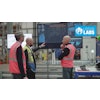



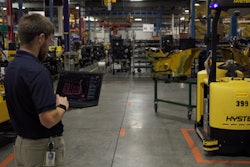
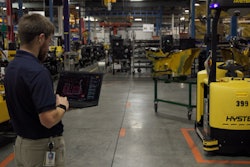


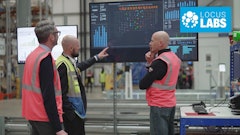





![Pros To Know 2026 [color]](https://img.sdcexec.com/mindful/acbm/workspaces/default/uploads/2025/08/prostoknow-2026-color.mduFvhpgMk.png?ar=16%3A9&auto=format%2Ccompress&bg=fff&fill-color=fff&fit=fill&h=135&q=70&w=240)
